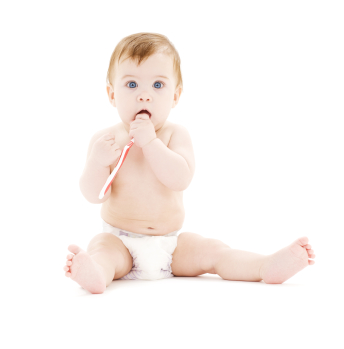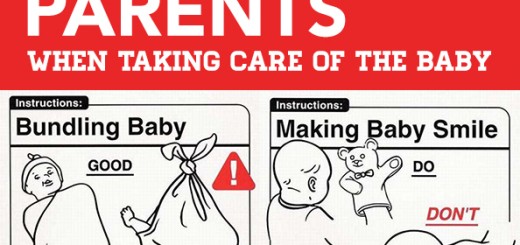The 411 On Pumping

Bewildered by breast pump options (and how to actually pump when you’re breastfeeding)? You’re not alone. Getting a good pump and knowing how to use it properly can make the process much less daunting. Read on for answers to your most pressing pumping questions from Ayelet Kaznelson, an International Board Certified Lactation Consultant and a Certified Lactation Counselor.
What are the different kinds of pumps?
1. Hospital-grade electric pumps
A hospital-grade pump is the most efficient pump on the market. It’s a multi-user pump, which means it’s safe for many people to share it, as long as you have your own attachments that connect from your breast to the pump. It is usually quite expensive, so most women choose to rent. It is the optimal pump to initiate milk production, if you have milk production problems at first.
Reasons to consider renting a hospital-grade pump:
- Have had breast surgery, especially breast reduction
- Having multiples
- Having a premature baby
- Your baby has been hospitalized after delivery
- Low milk production
- Postpartum medical complications
2. Large portable double electric personal use pumps
A large, store-bought double electric pump is a great option for women who are going back to work or need to pump regularly. Most double electric personal use breast pumps can be used with store-bought, snug fitting hands-free bustiers or ones that you create out of an old sports bra. We advise caution with one particular pump model that advertises a “hands-free method” since its smaller size and rechargeable battery seems to be considerably weaker at maintaining an adequate milk supply.
3. Small electric double pumps
A small double electric pump generally has a motor, which is too small to be effective, and is usually not efficient enough for women who need to pump regularly.
4. Single electric pumps
A single electric pump allows you to pump only one breast at a time and is generally not very efficient.
5. Battery operated pumps
A battery operated single pump is also not reliable and will usually not work well for someone who needs to use it regularly.
6. Manual pumps
A hand pump can be quite effective for those who do not plan to go back to work, don’t want to give many bottles, and only need to pump occasionally.
7. Your hands
Although it may take some practice at first, some women learn how to use their own hands to extract milk and find it easy, pleasant, and efficient. Here is a link to watch how it is being done.
What does my insurance cover?
Many insurance companies now offer free pumps. Check with your plan to see what they offer participants. However, please keep in mind that many of these pumps are not considered particularly efficient or effective, and that some of the more reputable companies provide a “watered down” version of their top pumps to be used in this context. While these pumps may work well enough for you, you might find that you need to purchase or rent a more efficient pump.
If you live in the NYC area, there is a fantastic service at the Upper Breast Side, a breastfeeding resource center on the Upper West Side of Manhattan. They offer “The Milk Bar”, where you can get a thorough consultation. To find a lactation consultant wherever you live, click here.
When should I pump?
The general guideline is to pump whenever your baby is being given a bottle. How soon to start pumping after you give birth depends on how quickly you need/want to give your baby a bottle. If you need to supplement your baby with your own pumped breastmilk or formula, you will want to pump to avoid having your milk production decrease. Contact a lactation consultant to find out what the best pumping plan is for your particular situation. Most women need to pump for around 15 minutes to replace a feeding.
If you are pumping a little extra, along with breastfeeding, you want to pump after you have fed your baby so that you don’t compromise their milk intake from your breast. Most women find that they have the most surplus after morning feedings. Adding pumping sessions on top of breastfeeding can increase your production unnecessarily. Overproduction, tempting as it might sound, can have a negative impact on breastfeeding and should be avoided if possible.
How do I store my milk?
For milk storage guidelines visit Kelly Mom. This is the ultimate website for all evidence-based breastfeeding information.
How should I clean my pump?
If you have a healthy full term baby, and you have access to clean, non- contaminated water, many recommend just washing the pump pieces with hot soapy water after each use. Sterilize before first use. If you feel there is a reason to sterilize frequently, you can do so by either placing the pump pieces in a pot of boiling water, or by using a sterilizing kit in the microwave.
Ayelet Kaznelson is an International Board Certified Lactation Consultant and a Certified Lactation Counselor in private practice in Manhattan. She believes that there are many ways for women to breastfeed successfully. Her goal is to offer evidence-based information, advice, and support that fit each mother’s particular needs and goals. She provides home lactation consultation, teaches prenatal breastfeeding and newborn care classes, and runs postpartum breastfeeding clinics at Seleni. She lives in Manhattan with her two children, Zoë and Liam, and her fiance Todd.



